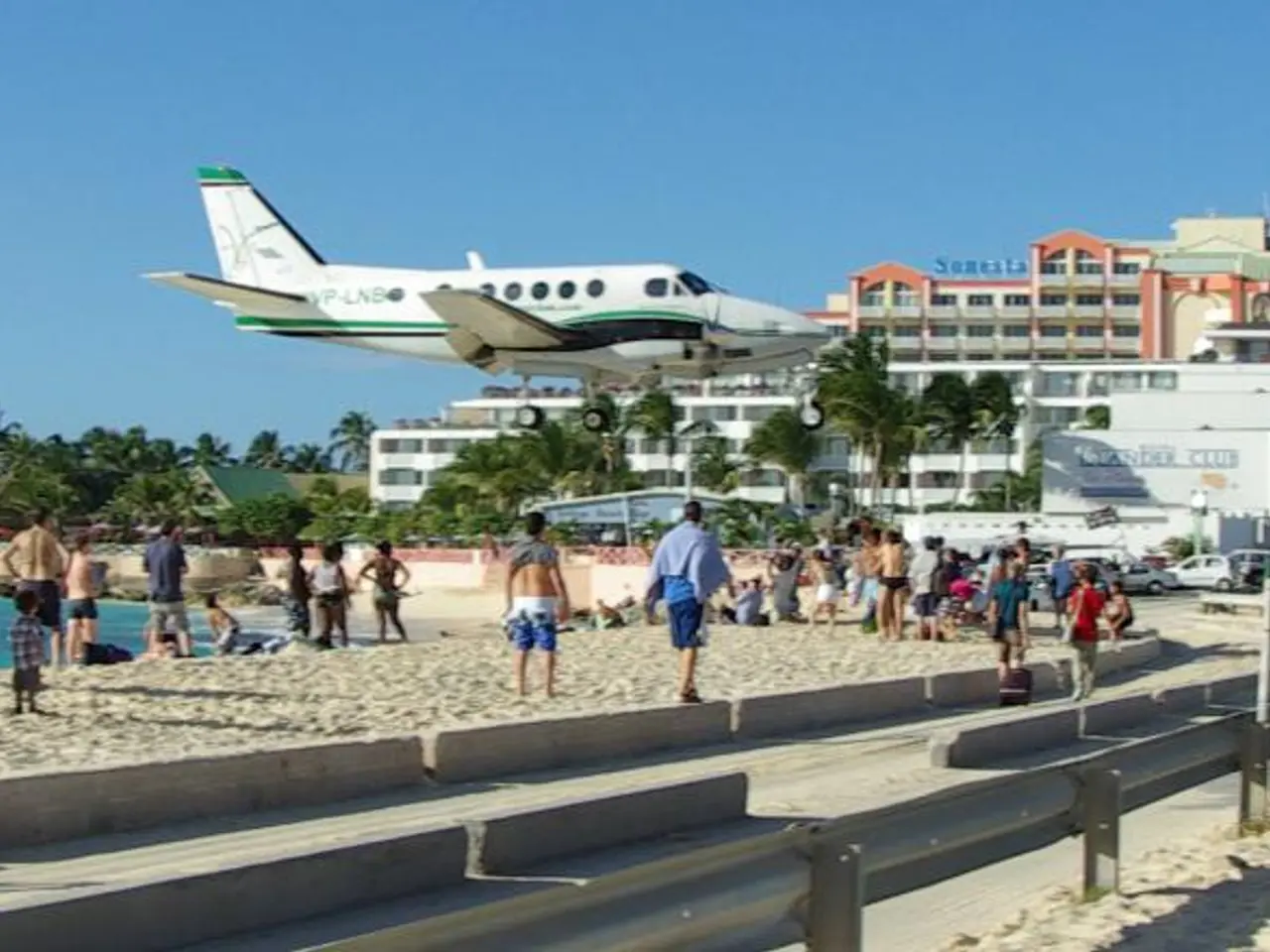Environmental assessment near Marine Seagrass Meadow stirs debate about secrecy surrounding Singapore's ecological evaluations
The ongoing Changi Beach reclamation project, set to expand Changi Airport's cargo handling capacity from 3 million tonnes per year to 5.4 million tonnes annually, has sparked concerns among local residents and environmental groups.
The Housing Development Board (HDB) has commissioned an environmental impact assessment (EIA) for the project, but concerns have been raised about the confidentiality surrounding Singapore's EIA processes in sensitive projects. Among the 11 EIAs conducted in the first half of this year, three - including the Changi Bay reclamation project - required non-disclosure agreements (NDAs).
Ria Tan, who runs Wild Singapore, supports the call to remove the NDA requirement for public engagement with the government. Tan encourages her peers to turn down invitations from government agencies and corporations if they insist on NDAs.
Enhancing transparency and public access is key to building trust and enabling meaningful scrutiny of environmental consequences. Involving a wider range of stakeholders, including environmental NGOs, local communities, and youth biodiversity advocates, can improve environmental protection.
Conservation biologist Debby Ng supports stakeholders wanting better access to EIAs for improved effectiveness. Among the concerns raised is the potential impact of reclamation works on Changi Beach Carpark 6, a popular spot for intertidal walks.
Muhammad Nasry Abdul Nasir, executive director of Singapore Youth Voices for Biodiversity (SYVB), has concerns regarding the hydrology of the site and how reclamation works will alter the movement of spawn and mangrove propagules. However, his key concern is not regarding biodiversity loss from this project. Instead, he is concerned with access to the shore.
Aarika Lee and her family discovered the intertidal areas in Changi after attending guided walks and have nurtured a love for marine life. Leong Si Wei, a citizen researcher, believes conserving the shoreline is needed for public education. Over 1,300 people have signed a petition to conserve a biodiversity-rich beach on Singapore's easternmost coast, expressing concern that the requirement of a "blanket NDA" can undermine the process surrounding the EIA for the reclamation project.
The petition calls for a further scale-back of the project to protect Changi Beach as a site for local biodiversity appreciation. The government plans to reclaim 193 hectares of land to build a new aviation park in the area, but the footprint of HDB's reclamation plans has barely changed since its initial engagement with the agency, according to Rachael Goh, a member of LepakInSG.
To improve the EIA process, Singapore can increase openness and public involvement, apply rigorous biodiversity impact analysis, ensure independent and binding review processes, and connect EIAs with evolving sustainability regulations. This would better safeguard biodiversity and public interest, particularly access to natural shorelines and educational opportunities about the marine ecosystem.
Singapore's first logistics park, built in 2003, is already operating at full capacity, highlighting the need for expansion to meet growing demand. However, striking a balance between development needs and biodiversity protection is crucial for a sustainable future.
References:
[1] Ministry of Sustainability and the Environment, Singapore's Green Plan 2030, 2021. [2] Singapore Youth Voices for Biodiversity, Changi Beach Reclamation EIA: A Step Forward or a Step Backward?, 2022. [3] United Nations Environment Programme, Guidelines for Preparing and Reviewing Environmental Impact Assessments, 2016.
- The ongoing Changi Beach reclamation project, aimed at expanding Changi Airport's cargo handling capacity, has raised concerns among local residents and environmental groups, who advocate for transparency in the environmental impact assessment (EIA) process.
- Environmental groups and individuals, like Ria Tan of Wild Singapore, are calling for the removal of non-disclosure agreements (NDAs) in EIAs to allow for public engagement on sensitive projects.
- The Changi Bay reclamation project, one of 11 EIAs conducted in the first half of the year, required an NDA, along with two others. This has sparked controversy over the lack of transparency in Singapore's EIA processes.
- Stakeholders, including conservation biologist Debby Ng and Muhammad Nasry Abdul Nasir of Singapore Youth Voices for Biodiversity (SYVB), have expressed concerns about the potential impact of the reclamation works on Changi Beach Carpark 6, a popular spot for intertidal walks, and the hydrology of the site.
- Aarika Lee and her family, along with over 1,300 other concerned individuals, have signed a petition to conserve a biodiversity-rich beach on Singapore's eastern coast, citing concerns that a "blanket NDA" can undermine the EIA process for the reclamation project.
- SYVB's Muhammad Nasry is particularly concerned about access to the shore and the potential impact of the reclamation works on spawn and mangrove propagules movement.
- The government's proposal to reclaim 193 hectares of land for a new aviation park has drawn criticism, with some advocating for a scale-back to protect Changi Beach as a site for local biodiversity appreciation and public education.
- In light of these concerns, Singapore could improve its EIA process by increasing openness and public involvement, applying rigorous biodiversity impact analysis, ensuring independent and binding review processes, and connecting EIAs with evolving sustainability regulations.
- The need for expansion in Singapore's logistics industry, as demonstrated by the operating at full capacity of the first logistics park built in 2003, underscores the importance of striking a balance between development needs and biodiversity protection for a sustainable future.




